-
Creating a dramatic Star Trek starship smackdown
Posted on March 28th, 2020 No commentsDestroying spaceships was one of the more interesting challenges on the Star Trek TV shows. The default approach was to superimpose some gasoline fireballs over the spaceship miniature and then dissolve the model out and call it a day. Early on after I arrived at Star Trek I did experiment with what were supposed to be thermonuclear explosions with bright flashes and shock waves. It was effective in the scenes but a bit unsatisfying.
When the story allowed I would try to make the shot a bit more fun with what I called “visual shorthand.” I was looking for what quickly communicated visually that a starship was in trouble.
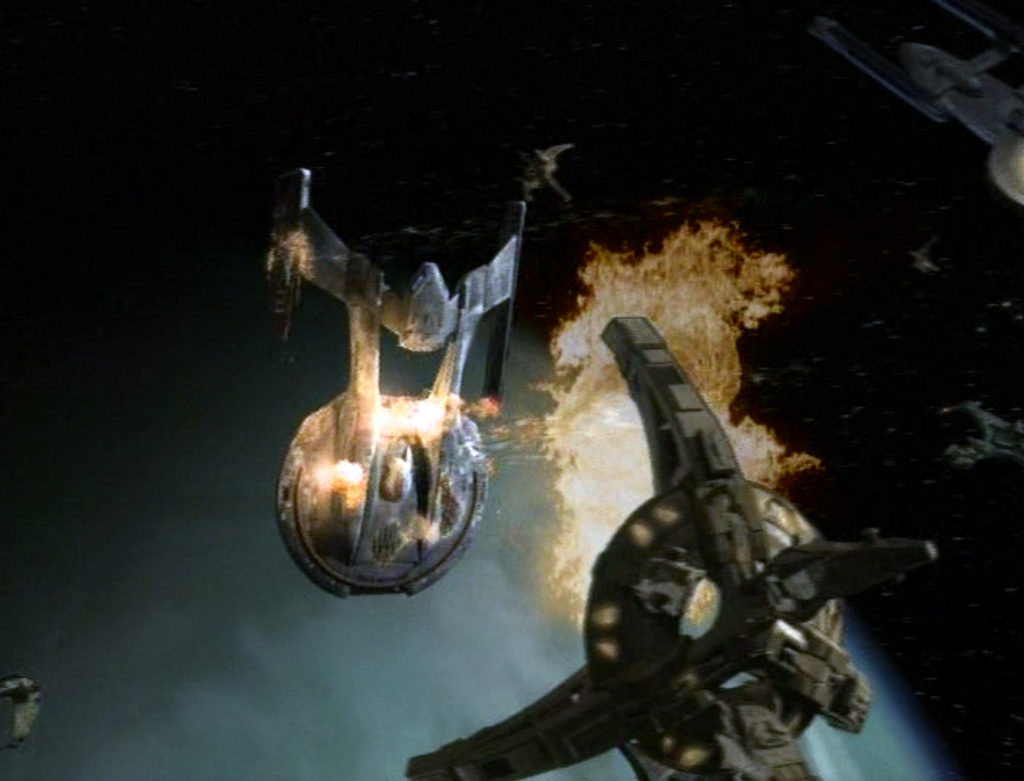 As I originally pondered this I wondered what was a real-world visual correlate to spaceships being destroyed. To me, the best comparison was a huge military ship in combat. I most often thought of the Bismarck sinking in 1941.
As I originally pondered this I wondered what was a real-world visual correlate to spaceships being destroyed. To me, the best comparison was a huge military ship in combat. I most often thought of the Bismarck sinking in 1941.After a massive battle, the Bismarck roll over onto its side and sank.
This is an example of how an artist’s life experiences can affect their work. My awareness of the Bismarck capsizing is a direct result of building a model for a middle school history class. I proudly showed my model of the Bismarck to my instructor.
Being a typical young teenager I had not done my research and had constructed the model sinking by the bow like the Titanic. My instructor complimented my model and then informed me that the Bismarck actually sank by rolling over or capsizing. My embarrassment etched the experience into my memory for me to draw up many years later for Star Trek.
-
Digital vs. physical Jem’Hadar
Posted on June 23rd, 2009 No commentsIn the last posting I shared images of the Jem’Hadar cruiser model. RKW asked for some comparison shots between the physical model and the CGI model used on DS-9.

Physical model from episode, "Ties of Blood and Water" (Gary Hutzel, vis efx supervisor)
As you could see from the photo above and next below, the physical model was pretty good looking and would have been used as long as possible on the series.
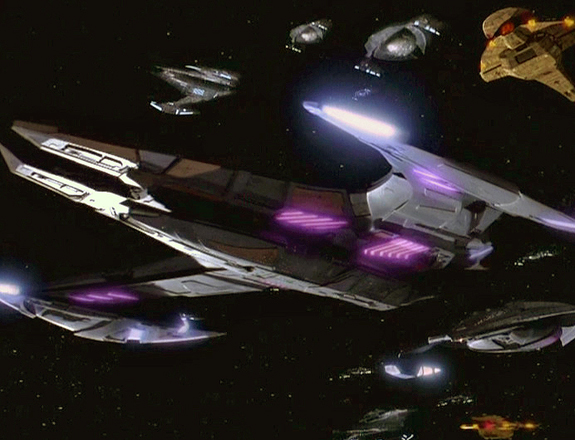
Physical model from episode, "Call to Arms"
With season 6 episode #546, “Valiant,” we were forced to create a CGI (Computer Generated Imagery) version of a Jem’Hadar ‘Battleship.’ The main reason was compelled by the story. If possible we would have used the physical model for both the cruiser and the Battleship, with the scale of the model being the only difference. Read the rest of this entry »
-
John Eaves’ Jem’Hadar for DS-9
Posted on June 20th, 2009 No comments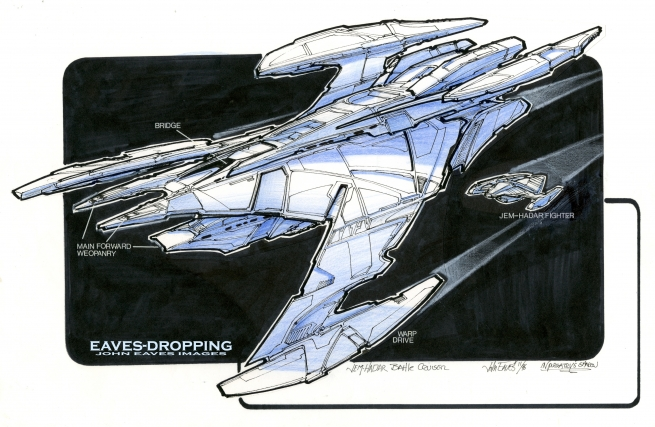
Since John Eaves posted his excellent designs for the DS-9 Jem ‘Hadar battle ship, I thought I would let you see it as a model.
John’s design translated into a terrific looking model that was fun to light and photograph. Read the rest of this entry »
-
Romance, Deep Space Nine style
Posted on May 1st, 2009 No commentsRomance between a “changeling” and a “solid” was not going to be easy on Star Trek: Deep Space Nine. For the episode, “Chimera,” Odo and Kira decided to take their relationship to a new level. Because she was a solid, Kira could never “meld” into oneness with the changeling, Odo, so they did the next best thing which was …. what?
At this point the DS9 production team was stumped. What could Odo do?
“Uh, anybody have any ideas?” “How about Odo becoming a cloud and snowing on Kira?” Nope. The women in the production thought it too cold sounding. “Kira could snuggle into Odo as he morphs into a pillow or a blanket.” Hmmm, Odo would have to morph through his goo state to become a pillow or blanket. That didn’t sound warm or cozy. Nothing suggested felt visually beautiful or romantic. So production filming began without this sequence finalized.
-
How to use a Perspective Cube
Posted on April 14th, 2009 No commentsNew visual effects students often have difficulty with the concept and application of the “perspective cube.” A perspective cube is a well constructed box with accurate parallel edges and right angles. Usually it is white with black lines along the edges. Typical construction materials would be white foam core and one inch black paper tape along the edges.
The cube size is somewhat to taste and per your transportation restrictions but it should not be too small. Most appear to be 12″ x 12″ x 12″ or 18″ x 18″ x 18″. I suggest using whole inch measurements and make all side equal as that facilitates quicker set up and ease of reproduction in a Computer Generated Imagery (CGI) environment if needed.
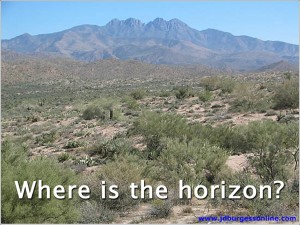 The perspective cube can be used for multiple reasons. Today we will use the perspective cube to find a horizon line that can’t be seen.
The perspective cube can be used for multiple reasons. Today we will use the perspective cube to find a horizon line that can’t be seen. Suppose you are on location where mountains or vegetation blocks your view of a horizon line and you have no other man-made structures to run perspective lines from to find a vanishing point and horizon line.


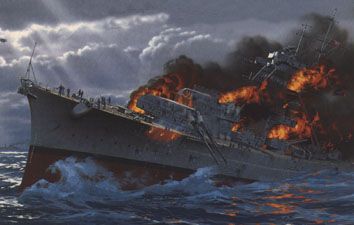
Recent Comments